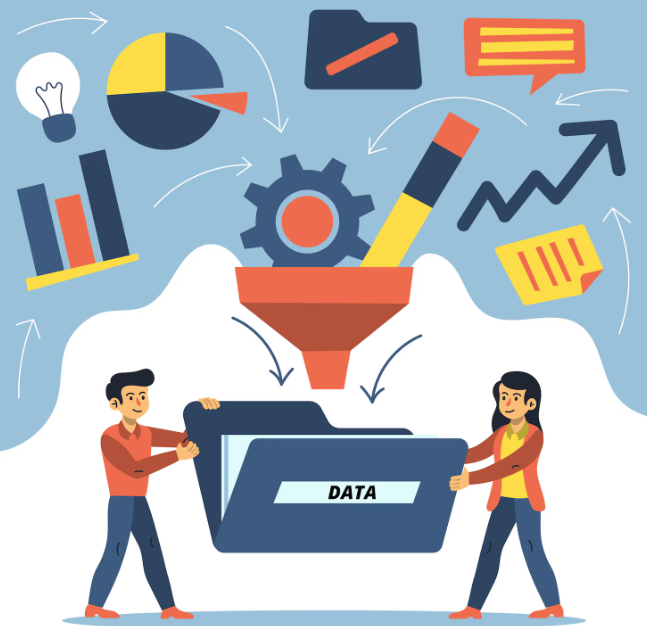Introduction
Think of internet marketing as a bustling marketplace under a giant glass dome. Every visitor steps inside with curiosity, wandering between colourful stalls, pausing at some, skipping others, and finally deciding whether to make a purchase. For businesses, this glass dome is not transparent by default—it is fogged up. Without the right tools, they can only guess where their customers hesitate, what excites them, and where they leave. Google Analytics 4 (GA4) acts as the cloth that wipes the dome clean, offering a sharper view of the customer’s journey.
Understanding this journey is critical for e-commerce businesses, and funnel analysis in GA4 provides that narrative. For learners pursuing internet marketing training in hyderabad, mastering funnel analysis is akin to learning how to decode customer behaviour in real time.
Mapping the Digital Pathway
Every e-commerce store resembles a winding path through a garden. Shoppers don’t simply teleport from homepage to checkout; they stroll, pause, and sometimes turn back. Funnel analysis captures these steps—homepage visits, product views, cart additions, and checkouts—like milestones along the path.
GA4 brings flexibility by allowing marketers to build custom funnels tailored to business objectives. Unlike rigid reports of the past, GA4 funnels can measure both linear and non-linear journeys. This means you can track shoppers who take detours—say, reading reviews before adding items to their cart—and still evaluate their journey meaningfully.
Spotting the Invisible Leaks
Imagine pouring water into a clay pot. If there are cracks, the water seeps away, leaving you with less than expected. Funnels work the same way; leaks represent moments where potential buyers vanish. Maybe they abandoned the cart after shipping fees appeared, or perhaps the payment gateway confused them.
GA4 not only highlights these cracks but quantifies them. For example, it can reveal that 40% of users drop off during checkout. With this knowledge, marketers can test alternatives—simplifying forms, offering guest checkout, or displaying upfront delivery costs. Such insights transform guesswork into surgical precision, enabling digital teams to patch the pot before too much value slips away.
Layering Insights with Segmentation
Not all shoppers are the same. Some are first-time visitors, others are loyal customers returning for their fifth order. Analysing them as one crowd is like treating every traveller in a railway station as though they’re heading to the same destination.
GA4’s segmentation allows marketers to zoom in on distinct groups. By comparing high-value buyers to casual browsers, businesses can identify what drives loyalty. For instance, repeat customers might respond well to personalised recommendations, while newcomers could be nudged with limited-time offers. Professionals undertaking internet marketing training in hyderabad learn to wield segmentation like a magnifying glass—bringing clarity to the blur of collective data.
Storytelling Through Data Visualisation
Numbers alone rarely stir action. Visual storytelling does. GA4 provides clear visual funnels where each step resembles a narrowing corridor. With one glance, you can spot where the majority of visitors vanish.
For managers and executives who may not swim comfortably in spreadsheets, these visuals serve as a bridge. Instead of lengthy explanations, a chart showing a sharp drop-off between product page and cart speaks louder than pages of numbers. It transforms data from static records into dynamic narratives—stories that inspire action and drive strategies.
Turning Analysis into Action
Insight without action is like reading a map but never taking the journey. Once funnel analysis uncovers friction points, the real work begins: experimenting, optimising, and iterating. Marketers can use A/B testing to trial new layouts, adjust pricing displays, or test different promotional strategies.
The beauty of GA4 is its ability to measure the ripple effect of these experiments. Did a streamlined checkout reduce drop-offs by 15%? Did free shipping boost conversions for first-time buyers? These answers come quickly, helping teams refine their approach in cycles of continuous improvement.
Conclusion
E-commerce success depends not only on attracting visitors but on guiding them seamlessly to purchase. Funnel analysis in GA4 is the compass that ensures no traveller is lost without explanation. By mapping customer journeys, identifying leaks, segmenting audiences, and presenting data through compelling visuals, businesses can turn ambiguity into clarity and hesitation into confident buying decisions.
For professionals engaging in internet marketing training in hyderabad, mastering these techniques is more than an academic exercise—it’s a career skill that bridges theory with impactful business outcomes. The glass dome of digital commerce doesn’t need to remain fogged. With GA4 funnel analysis, marketers can finally see the journey clearly, guiding customers from curiosity to checkout with confidence.

